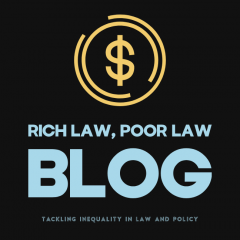Billionaires are a sign of economic failure and cannot be justified on any ground.
Wealth inequality:
Globally, Oxfam International revealed in 2020 that the world’s 2,153 billionaires are wealthier than 60% of the population (4.6 billion people). Similarly, in a survey conducted by Office for National Statistics between April 2018-March 2020, it was found that “the wealthiest 10% of households held 43%” of all of Great Britain’s wealth while the “bottom 50% held only 9%”. The names that can be seen at the top of the UK’s 2022 Rich List are the likes of:
- Sri and Gopi Hinduja, worth over £28bn, in the industry and finance sector.
- Sir James Dyson, at £23bn, in household goods and tech (Dyson).
- David and Simon Reuber, worth over £22bn, having sourced their wealth from the property and internet sector.
How do billionaires become billionaires?
A number of factors come into play here. Approximately 1/3rd of billionaires come from privileged backgrounds, and thus their wealth is inherited. The remaining 2/3rds (with $30 million or more net worth) are considered “self-made”. It would be difficult to argue that individuals who become wealthy through their own hard-work don’t deserve it – right? But there may be foul-play involved.
Rebekka Ayres is of the contention that it is not possible to be a self-made billionaire, arguing that “this is the language of a larger myth that justifies wealth inequality” by reinforcing that people are poor merely because they are lazy or have made bad choices. In reality, the wealthy do not always pay their honest tax percentages, finding loopholes that are out of reach for most working-class families: last year, Rishi Sunak’s family was accused by Labour of avoiding paying tens of millions in taxes. Jurisdictions with tax havens (low taxation rates) also come in handy. The top 3 “biggest enablers of global corporate tax abuse” were the British Virgin Islands, the Cayman Islands, and Bermuda, all of which fall under British overseas territories. The tax money denied by billionaires to governments could have been spent on schools or hospitals.
Exploitative labour practices are also relevant. Whether directly or indirectly, the ultra-rich are profiting from an unjust economic system, and aiding such injustice by for example, “denying workers a living wage” and “ensuring that medicine and health care costs remain high”. One example can be seen in the sex-work industry, with OnlyFans facing scrutiny for reports of “filmed child sexual abuse, sex trafficking, and other non-consensually recorded sex acts” on its website.
And then there is the role of political affiliations – billionaires shaping policies to prioritise their own agendas. An “elite Tory dining club” that enjoyed “direct access to Boris Johnson” has given the Conservative Party more than £130 million since 2010. With the Tory party depending on such funding, it is suggestive that the super rich are helping to pull the strings behind the scenes.
Should billionaires exist?
Ayres called the existence of billionaires “immoral”, which I would struggle to disagree with. But it is worth assessing the impact of so few having so much.
For starters, does having billions make people happy? Research conducted in 2019 suggested that “the “income satiation” point” was approximately €55,000/year, indicating that sitting in the billions is unnecessary for maximising emotional wellbeing.
And does the presence of billionaires actually lead to growth, social mobility and climate justice? When examining the effect of billionaires on a country’s economy, Ana Swanson summarises the two sides of the argument: the classic position is that inequality propels growth as the benefits of their investments and innovations trickle-down for the rest of society to enjoy and that wealth-redistributive programs are inefficient; others argue that inequality drags growth because it ensures the poor stay poor and it leads to political instability. In fact, research conducted by Sutirtha Bagchi and Jan Svejnar found that “the higher the proportion of billionaire wealth in a country, the slower that country’s growth”. While it is true that billionaires create jobs and wages, justifying billionaires on this basis falters when workers are struggling to survive, especially now given the energy crisis. Quoting Thomas Piketty, Max Lawson wrote: “no matter how justified inequalities of wealth may be initially, fortune can grow beyond any rational justification in terms of social utility”. The reality is that the existence of billionaires impairs social mobility and economic progress.
The picture isn’t much brighter when looking at carbon emissions. Oxfam reports that billionaires annually are “responsible for a million times more greenhouse gases than the average person”. It’s not like they can’t afford to put climate change action plans in place!
What should be done?
Politicians from both the Labour and the Conservative party can be seen to promote the notion of equality of opportunity and social mobility, yet this is impossible alongside a “grossly unequal society”. A “disadvantaged child will nearly always and everywhere become a disadvantaged adult” due to poorly run schools and lack of support available at home. Achieving a meritocracy then, which is a system’s rankings based on an individual’s abilities and their merit, is impossible to do without dealing with the surrounding inequalities. Equality of opportunity will remain an illusion if the gap between the rich and the poor is not reduced – an easy place to start is addressing the problem of billionaires.
How, then, can the billions of billionaires be redistributed? Along with “correcting under-taxation, legislators must close loopholes to make tax laws watertight”. This money can then be directed towards funding for the NHS, an overworked and under-funded system. There may even be scope to argue for the introduction of a Universal Basic Income which involves regularly giving citizens a sum of income. But working towards eradicating poverty and building fairer societies means bringing “an end to extreme wealth” being held in the hands of so few.
Author: Talita Zavrsnik de Campos





